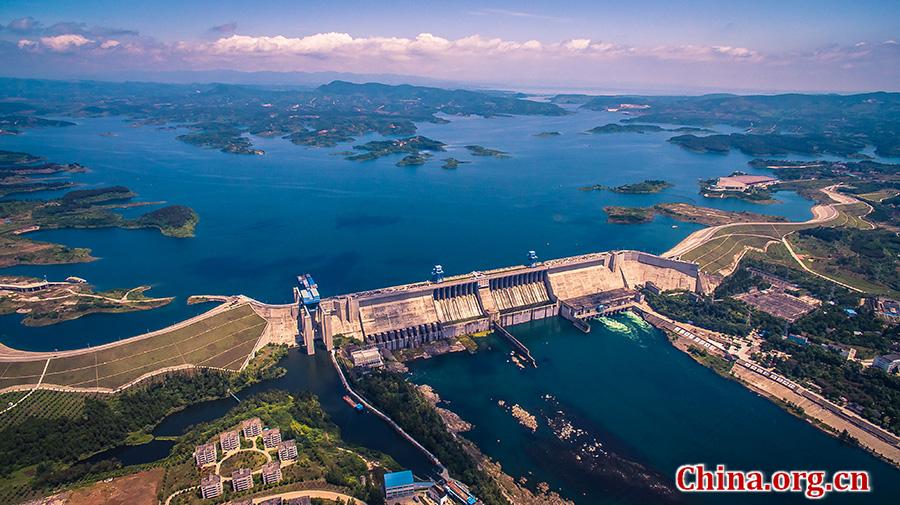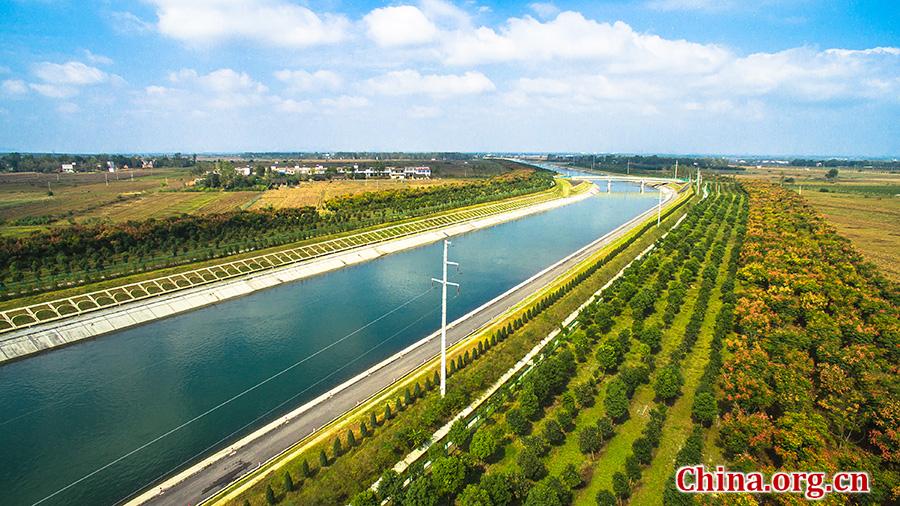With sufficient water inflow from the Danjiangkou Reservoir, the central route of the South-to-North Water Diversion project started its first large-scale water replenishment from April 17, which lasted until the end of June. The highest water flow through the route reached 380 cubic meters per second during that time, which demonstrated the route’s capabilities of reaching its targeted average water flow of 350 cubic meters per second for ordinary times.

The photo shows the Danjiangkou Reservoir. Located on the Hanjiang River, a tributary of the Yangtze River, and spanning both Henan and Hubei provinces, the Danjiangkou Reservoir is the water source of the central route of the South-to-North Water Diversion Project, a multi-decade infrastructure mega project designed to divert water from China's humid south to dry north. [Photo/China.org.cn]
By comparison, it took 17 years for the water diversion project in California to reach its designed average water flow, whereas the central route took only four years, which was an extraordinary achievement, said Wang Yisen, deputy director of the expert committee of the South-to-North Water Diversion Project Construction Commission of the State Council.

The photo shows the green belt of the Dengzhou segment along the central route of the South-to-North Water Diversion Project. [Photo/China.org.cn]
The central route effectively alleviated water shortage in provinces and cities along the route, and guaranteed a normal water supply for water users, according to reports.
The load of the route ran at a set level at the beginning of its operation, and gradually reached the targeted average with a year-on-year increase of 10 percent.

The photo shows the Daning Surge Tank, the first stop in Beijing that diverts water from the central route of the South-to-North Water Diversion Project. [Photo/China.org.cn]
As of June 17, the route has achieved a cumulative water inflow of 15 billion cubic meters with a rate of 384.33 cubic meters per second.